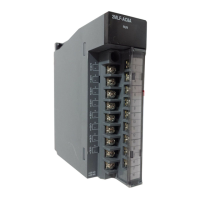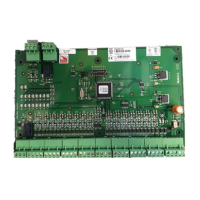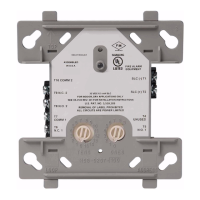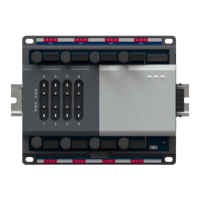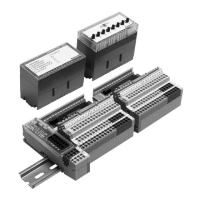Installation and Operations Guide
|
ACM-VLX/VLX/EXP/AXM
60
© Honeywell. All Rights Reserved. LT-VLXEXPAXMIOG Rev. 01
IMPORTANT A Hand-Off-Auto (H-O-A) switch, which is combined with a
trimpot for AOs, enables physical override of all software output commands. See
“Using H-O-A switches and trimpots” on page 65 for more information.
Present values and the priority array
To command an AO or BO, write commands to the present-value property of the
object. When the present-value is commanded, you designate a priority for
writing that is used by the priority-array property.
Understanding the priority array is essential to understanding how automation
features, DDC, and manual overrides combine to affect output status. A higher
priority for writing takes precedence over lower priorities. The highest priority is
1, the lowest is 16. These are also called indexes of the priority array. For some
VLX/ACM-VLX automation features, the priority for writing is configurable;
for others, it is fixed at a given level. See Table 13.
When setting up features to write to the present-value of an AO or BO, consider
the priority for writing of the feature you are using. Also consider its interaction
with other features and their priorities.
Analyzing the value of priority-array indexes can provide useful information
about output status and command sources.
Reading AO and BO present-values in DDC
CAUTION If VLX/ACM-VLX DDC reads the present-value of an AO or BO
that VLX/ACM-VLX DDC writes to, it returns the last value DDC wrote, rather
than the true present-value as determined by the priority array. This can cause
application issues when the BO present-value is read later in the DDC program
and used in the control sequence.
To avoid reading an incorrect present-value, don’t write to an AO or BO present-
value when you will read the present-value in DDC. Instead, write to the
priority-array property of the AO or BO at Index 9. This practice prevents the
VLX/ACM-VLX from storing the last written present-value in memory and then
subsequently referencing it.
Table 13 Command prioritie s for VLX/ACM-VLX automation fe ature s
Fe ature Prio rity fo r writing
Rese rved. Do not write to pre s e nt-value at this index. 1
Rese rved. Do not write to pre s e nt-value at this index. 2
Rese rved for H-O-A s tatus . 4
Built-in anti-cycle automation fe ature . Do not write at this index.
(BOs only. S e e “Anti-cycle prope rtie s ” on page 61.)
6
Data display ite m. Inde x 8 is de fault. Configurable as command
priority when setting up prompted ite ms .
8
VLX/ACM-VLX DDC 9
Eve nt sche dule 13
Holiday s chedule 15
Standard s che dule 16

